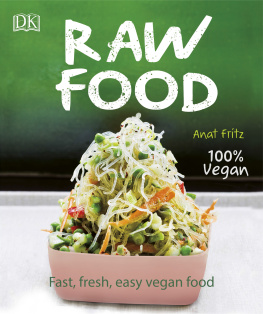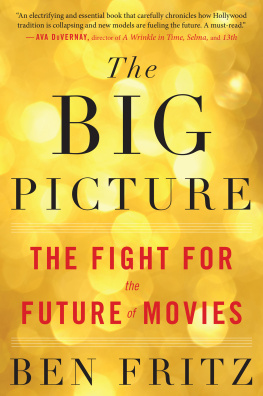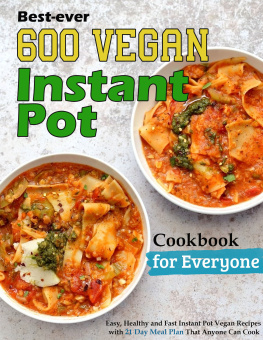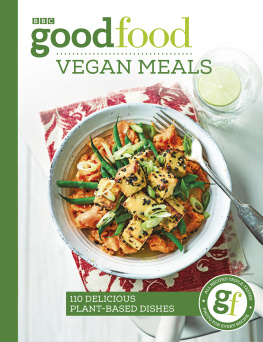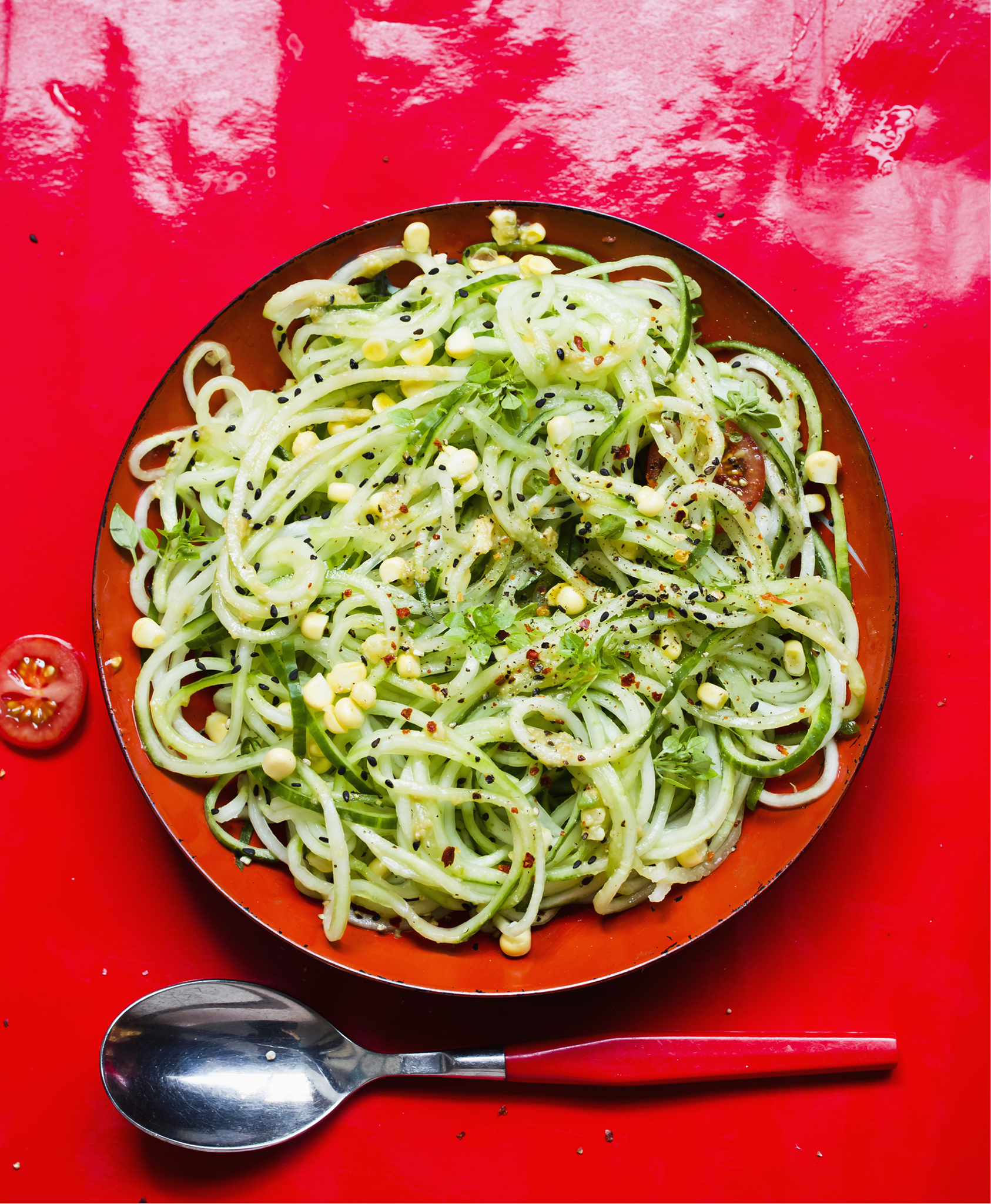The term raw food applies to all food not heated over a certain temperature, commonly agreed to be 104F (40C). There are varying viewpoints on this, but this is the scientifically acknowledged limit above which heat-sensitive vitamins and enzymes in food are diminished or lost altogetherin other words, cooked away.
Actually, the topic is not all that complicated. One thing is for sure: eating raw food for a long time, a short time, occasionally, or even in a medicinal capacity is always beneficial. Ive been a raw vegan (see ) for more than 2 years now. Aside from the health benefits, following a raw food diet fairly strictly promotes a feeling of well-being and increases vitality and beauty. The positive effects can be seen after even just a short time. Your skin becomes smoother, your eyes brighter, and your mood also improves. Raw food even helps fight against depression. The term superfood says it allit expresses how effective raw food really is.
I hope the recipes in this book inspire you, or even lead you, to add raw food to your daily diet. Every change starts with just one small first step!
INTRODUCTION
Vegetarian, vegan, or raw?
The decision to live as a raw vegan utterly changed my relationship to nutrition. Once I became a raw vegan, I truly felt the meaning of the principle eat to live and not live to eat. In saying this, I am thinking primarily about consuming food that is still full of energy and abstaining from milk, meat, and products derived from animals. These are hard to digest and acidify the gut flora (the microorganisms in our intestines that help digest certain foods). Excessive consumption of these foods can increase the risk of chronic conditions such as high cholesterol levels, which can result in heart disease and stroke.
The transition from vegetarian to vegan to raw food cuisine is easy to explain. Vegetarians abstain from eating foods produced by killing animals, but their diets include products derived from animals, such as milk, cheese, and honey. On the other hand, vegans do not eat any animal foods whatsoever, not even foods processed using animal products. The next step from vegan to raw food cuisine is fairly straightforward.
Both vegan and raw food cuisines are completely cholesterol-free since both refrain from using animal products. Both use every available kind of fruit and vegetable, many greens and herbs, seeds, and nuts but also sprouts, seaweed, and natural flavorings. Vegan cuisine also uses soy products. Because they are heated, and difficult to digest, soy products do not play a role in raw food cuisine.
RAW FOOD IS RICH IN NUTRIENTS AND ENZYMES
When we think about heat, we arrive at the very heart of raw food. It is key to raw food cuisine that no ingredient, neither in its production nor in its processing, is heated above a certain temperature. The reason is that the enzymes, vitamins, and mineral nutrients that are diminished or utterly lost when food is cooked remain intact when food is not cooked. The temperature limit for raw food cuisine is about 104F (40C). I say about because there are varying viewpoints about and approaches to this guideline. Some raw food cooks dont heat food beyond 98.6 F (37 C), while others heat food to 107.6 F (42 C) or 109.4 F (43 C). In this book, we sit in the middle of this range at 104F (40C).
Enzymes are essential to healthy digestion. I once heard an appropriate saying: You are not what you eat, but what you digest! In my experience, it is not just what kinds of foods you consume that are important, but how they are digested is at least as important as nutrition for the promotion of good health and the prevention of illness.
Raw foods, especially green smoothies, are wonderful for promoting digestion and detoxifying the body. Along with their obvious detoxifying effect, raw foods help on an entirely different level. I often hear from people who eat normal cooked food that they no longer know which foods are beneficial to them and which ones are better to avoid.
Eating a raw food diet gives you clarity, reawakening you to your own perceptions. Why? By renouncing additives, sugar, and other similar ingredients that are hard for the body to process, your system cleanses itself from the inside out, giving you an unfiltered feeling and awareness of what is and isnt good for your body. It gives you back an original sense of what you need to eat. I find this very important. There is such a huge number and astonishing variety of industrially processed foods, making it hard to discern what exactly it is that your body needs.
EATING WITH AWARENESS
I dont generally care much for dogma and fanaticism, either generally or in the culinary realm. With this book, I am not trying to convert people into 100 percent raw food eaters, since I hope that the recipes will be convincing enough without any underlying ideology.
For example, although I have been a raw food eater for more than 2 years, I still toast my sesame seeds since I love their aroma so much that I could not do without them.
When I have guests over, I can easily get around serving cooked food, but you can be slightly flexible. When I went to my first Thanksgiving dinner, I refrained from showing up with my own container of food. Instead, I brought along a raw food key lime pie and enjoyed the vegetable sides. The next day, I returned to my green smoothie and right away could feel why I prefer eating raw food.
I am also happy to use sweeteners. I still eat honeya taboo for hard-core vegans and raw food eaters since it is produced by animals. When thinking about sweeteners, it is more important to move away from industrially processed sugar toward alternative sweeteners, such as dates and high- quality maple syrup, as well as honey, of course. Agave syrup is listed in many recipes in this book for the benefit of vegans, although according to new research, this is not healthier than sugar.

